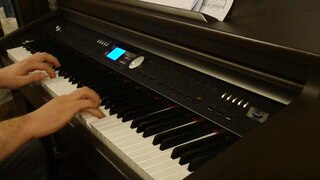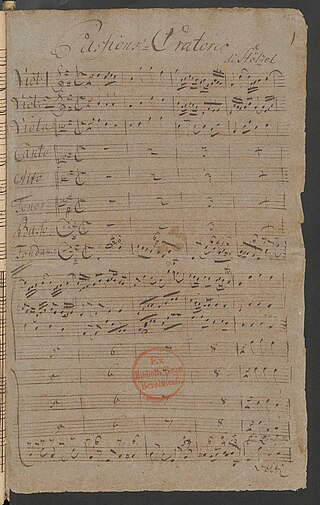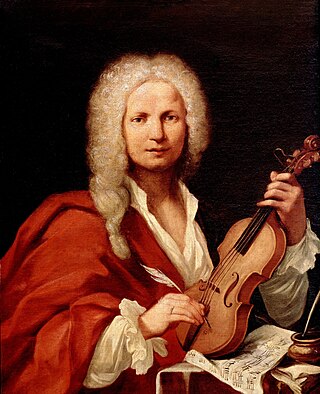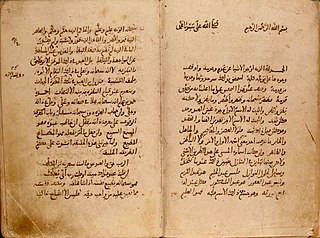The trio sonata is a genre, typically consisting of several movements, with two melody instruments and basso continuo. It originated in the early 17th century and was a favorite chamber ensemble combination in the Baroque era.
The Concerto for Two Violins in D minor, BWV 1043, also known as the Double Violin Concerto, is a violin concerto of the Late Baroque era, which Johann Sebastian Bach composed around 1730. It is one of the composer's most successful works.
Francesco Zappa was an Italian cellist and composer who lived most of his adult life in The Hague, the Netherlands.
The Oboe Concerto in D minor, S D935, is an early 18th-century concerto for oboe, strings and continuo attributed to the Venetian composer Alessandro Marcello. The earliest extant manuscript containing Johann Sebastian Bach's solo keyboard arrangement of the concerto, BWV 974, dates from around 1715. As a concerto for oboe, strings and continuo group, its oldest extant sources date from 1717: that year it was printed in Amsterdam, and a C minor variant of the concerto, S Z799, was written down.

The Minuets in G major and G minor, BWV Anh. 114 and 115, are a pair of movements from a suite for harpsichord by Christian Petzold, which, through their appearance in the 1725 Notebook for Anna Magdalena Bach, used to be attributed to Johann Sebastian Bach. These minuets, which are suitable for beginners on the piano, are among the best known pieces of music literature. The 1965 pop song "A Lover's Concerto", of which millions of copies were sold, is based on the first of these Minuets.

Johann Ernst of Saxe-Weimar was a German prince, son by his second marriage of Johann Ernst III, Duke of Saxe-Weimar. Despite his early death he is remembered as a collector and commissioner of music and as a composer, some of whose concertos were arranged for harpsichord or organ by Johann Sebastian Bach, who was court organist in Weimar at the time.
The Handel Reference Database (HRD) is the largest documentary collection on George Frideric Handel (1685–1759) and his times. It was launched in January 2008 on the server of the Center for Computer Assisted Research in the Humanities (CCARH) at Stanford University. Originally assembled by Ilias Chrissochoidis to support his PhD dissertation "Early Reception of Handel's Oratorios, 1732–1784: Narrative-Studies-Documents", it now includes about 4,000 items and 800,000 words. HRD is organized chronologically, covering the period from 1685 to 1784 and focusing on Handel's British career and reception. It includes transcriptions of printed and manuscript sources, some of which remain unpublished and external links to early secondary literature on the composer. The project received financial support from Houghton Library, Harvard University (2010–11) and UCLA's William Andrews Clark Memorial Library (2011–12).
Pietro Torri was an Italian Baroque composer.

Franz Adam Veichtner, also known as "Feichtner" was a German violinist and composer of the classical era.

Bach Digital, developed by the Bach Archive in Leipzig, is an online database which gives access to information on compositions by Johann Sebastian Bach and members of his family. Early manuscripts of such compositions are a major focus of the website, which provides access to high-resolution digitized versions of many of these. Scholarship on manuscripts and versions of compositions is summarized on separate pages, with references to scholarly sources and editions. The database portal has been online since 2010.
The Concerto, BWV 525a, is a trio sonata in C major for violin, cello and basso continuo, based on material otherwise found in Johann Sebastian Bach's first Organ Sonata, BWV 525, and Flute Sonata in A major, BWV 1032. The oldest extant manuscript containing the BWV 525a arrangement, D-B Mus.ms. Bach St 345, is dated to the middle of the 18th century. Although this version of Bach's sonata movements may have originated during his lifetime in the circle around him, it seems unlikely that the composer supervised, or even ordered, the manufacture of the string trio adaptation, thus the arrangement has been listed in BWV Anh. II, that is the Anhang (Anh.) of doubtful works, in the 1998 edition of the Bach-Werke-Verzeichnis (BWV). Breitkopf & Härtel published BWV 525a in 1965. Digital facsimiles of 18th- and 19th-century manuscript copies of the arrangement, in which the sonata is titled "Concerto", became available in the 21st century.
The Triple Concerto, BWV 1044, is a concerto in A minor for traverso, violin, harpsichord, and string orchestra by Johann Sebastian Bach. He based the composition on his Prelude and Fugue BWV 894 for harpsichord and on the middle movement of his Organ Sonata BWV 527, or on earlier lost models for these compositions.
The concerto transcriptions of Johann Sebastian Bach date from his second period at the court in Weimar (1708–1717). Bach transcribed for organ and harpsichord a number of Italian and Italianate concertos, mainly by Antonio Vivaldi, but with others by Alessandro Marcello, Benedetto Marcello, Georg Philipp Telemann and the musically talented Prince Johann Ernst of Saxe-Weimar. It is thought that most of the transcriptions were probably made in 1713–1714. Their publication by C.F. Peters in the 1850s and by Breitkopf & Härtel in the 1890s played a decisive role in the Vivaldi revival of the twentieth century.

Ein Lämmlein geht und trägt die Schuld, also known by the title of its earliest extant printed libretto, Die leidende und am Creutz sterbende Liebe Jesu, is a Passion oratorio by Gottfried Heinrich Stölzel, composed in 1720. Its opening chorus is based on Paul Gerhardt's "Ein Lämmlein geht und trägt die Schuld" and its usual hymn tune, Wolfgang Dachstein's "An Wasserflüssen Babylon" melody.

Johann Sebastian Bach wrote his fifth Brandenburg Concerto, BWV 1050.2, for harpsichord, flute and violin as soloists, and an orchestral accompaniment consisting of strings and continuo. An early version of the concerto, BWV 1050.1, originated in the late 1710s. On 24 March 1721 Bach dedicated the final form of the concerto to Margrave Christian Ludwig of Brandenburg.

Grosso mogul, also Il grosso mogul, or capitalised [Il] Grosso Mogul, RV 208, is a violin concerto in D major by Antonio Vivaldi. The concerto, in three movements, is an early work by the Venetian composer. Around the mid-1710s Johann Sebastian Bach transcribed the concerto for organ, BWV 594, in C major. A simplified version of the violin concerto, RV 208a, without the elaborated cadenzas that appear in manuscript versions of RV 208, and with a different middle movement, was published around 1720 in Amsterdam as concerto #11 of Vivaldi's Op. 7.

An autograph or holograph is a manuscript or document written in its author's or composer's hand. The meaning of "autograph" as a document penned entirely by the author of its content overlaps with that of "holograph".







